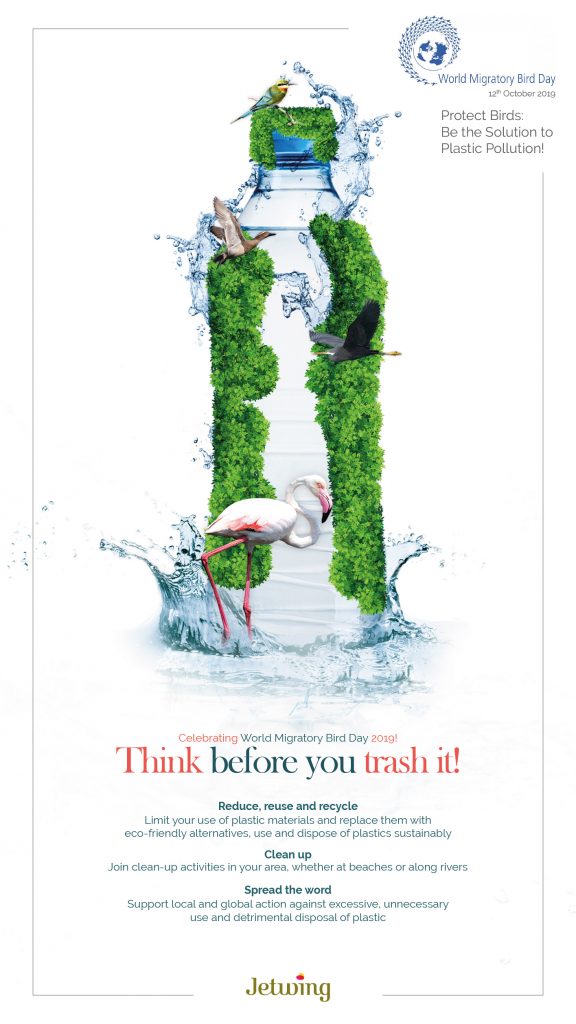Protect Birds: Be the Solution to Plastic Pollution!
by Jetwing · Published · Updated

In order to fortify global appreciation & recognition of migratory birds, The African-Eurasian Waterbird Agreement (AEWA) together with the Environment for the Americas (EFTA) and The Convention on Migratory Species (CMS) have joined forces to pave way for this year’s theme to revolve around the topic “Protect Birds: Be the Solution to Plastic Pollution!”, aiming to place the limelight on the impact of plastic pollution on migratory birds and their habitats.
With a yearly production exceeding 300 million tons, plastic has risen to be one of the most extensively used materials in the world. What we often fail to highlight is the fact that plastic is used for its main purpose for only an instant compared to its 20 to 500 years lifecycle. The discarded pieces which are both lightweight and designed to last get easily transported to ecosystems through the forces of nature, triggering imminent threats to migratory bird species around the globe. Research states that an estimated 8 million tons of plastic waste enter the oceans each year, whereby also highlighting the obvious fact that plastic does not simply dissolve. Sunlight, water, and wind break down the plastics into small particles paving the way for lethal cases of ingestion and entanglement.
Unfortunately, possessing wings does not aid birds in escaping the risk of plastic. Dead birds whose stomachs are full of plastic, entangled and suffocated by plastic nets and rings are all actual consequences of the toll that plastic takes on birds and numerous other wildlife.
The foraging behaviour of seabirds makes them prone to ingesting plastics since floating on the surface of the water, enclosed in algae, single-use plastics like drinking straws, bags, and bottles, both by shape and smell are easily mistaken for prey. Unsuspectingly, birds feed the plastics to their chicks who are even more susceptible due to their immature organs.
In cases of ingestion, the impairment caused by plastic depends on its shape whereby sharp plastic bits lead to instant death by piercing internal organs. In most cases, the consumption of plastic leads to feelings of chronic hunger and starvation as it provides the sensation of possessing a full stomach minus any nutritional value. An added threat is also brought forth by the toxicity of chemicals coating plastics.
The countless layers of plastic covering wetlands have given rise to numerous cases of trapping and entanglement whereby abandoned fishing gear is one of the most common grounds leading to a phenomenon addressed as ‘ghost fishing’. The birds caught are either injured and pick up infections or end up drowning. Often, the imprisoned birds are limited in their movements and therefore become easy prey to other animals.
Researchers have stated that the number of seabirds dying from the detrimental effects of plastic yearly is at present 1 million and growing. Furthermore, not only do 90% of seabirds are projected to possess plastic in their guts, at this rate the fraction of seabirds ingesting plastic by 2050 would ascend to 99%.
How you can assist in the fight towards eliminating plastic pollution?
Reduce, reuse and recycle – Limit all use of plastic elements and replace them with eco-friendly substitutes while utilising and disposing of plastics sustainably.
Clean up – Take part in clean-up activities in your vicinity, either at beaches or along rivers.
Spread the word – Support local and international action against excessive, superfluous use and harmful disposal of plastic.
Source: worldmigratorybirdday.org




